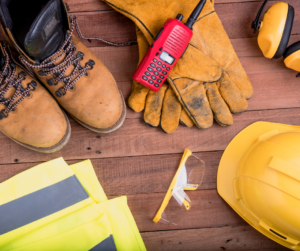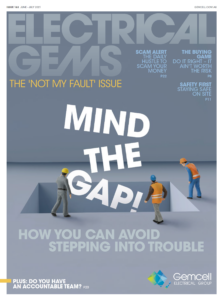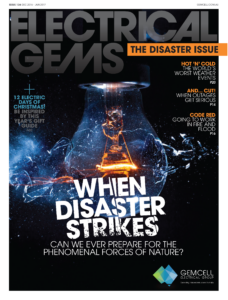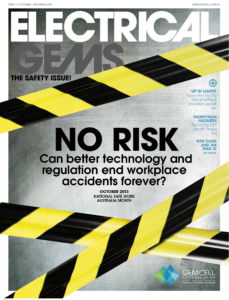Out Now
The Mental Health Issue
Current Issue
The Mental Health Issue
AUG - SEPT 2025

Apprentices can be key to growing your business. Make sure you’re looking after them.
It is especially tragic if accidents and fatalities occur when apprentices have not been adequately supervised. These are clearly preventable accidents.
Electrical apprentices require supervision for their safety and training and the safety of others.
The amount of supervision, and whether it is direct (constant), general, or broad requires continual assessment of an apprentice’s experience, competence and the tasks undertaken.
It can vary from direct to broad supervision depending on the type of work to be carried out.
A gradual relaxation of supervision is logical as an apprentice develops the skills, knowledge and experience leading to a trade qualification.
Remember to check the state or territory legislative and/or regulatory requirements in your jurisdiction.
The primary duty of care rests with the employer – through the supervising electrician – to determine the level of supervision required to always maintain safety. Consideration should be given to the type of work to be undertaken, the knowledge/skill levels of the apprentice and the safety equipment required.
The records should contain dates, successful performance of key working practices and other important details for future reference.
 The supervising electrician is responsible for ensuring that the apprentice learns the necessary work skills and for checking and testing all work carried out to ensure compliance with AS/NZS 3000 Wiring Rules.
The supervising electrician is responsible for ensuring that the apprentice learns the necessary work skills and for checking and testing all work carried out to ensure compliance with AS/NZS 3000 Wiring Rules.
Variations in the type of work, work environments and scope and whether you’re connected to the electrical supply or not present many combinations that the supervising electrician must assess when determining safety requirements for the job at hand.
The supervising electrician must make a conscious appraisal of the technical knowledge and practical skills of the apprentice. Where relevant, they should use the information available from the apprentice training system.
The type of work to be carried out must be measured against this appraisal to determine the level of supervision needed for safe working.
If the persons being supervised are apprentices or are undergoing training and live wires or live electrical equipment is involved, or is likely to be involved in the work area, the supervising electrician must ensure, as far as is practicable, that they remain close to such trainees.
The supervisor and worker are, therefore in sight of, and able to communicate directly with, each other. Where these requirements are not met, the apprentice must cease work immediately and leave the vicinity of the live equipment. The hazard must either be removed or made safe, or the trainee removed.
The supervising electrician must, at all times, endeavour to be aware of any personal problems that may affect the ability of the apprentice being supervised to carry out the work correctly and safely.
The apprentice should not continue to carry out electrical work, or any work involving a potentially hazardous situation if the individual is suffering from fatigue, sickness, medication, drugs or alcohol. These matters should be discussed with the employer or supervisor.
The employer or supervisor must then act accordingly, including postponing the intended electrical work.
A business must recognise and understand its responsibility for the training, supervision, and safety of its apprentices.
An Apprentice Supervision and Work Allocation Policy will also include the obligations of the employer, the obligations of the worker in charge, and the obligations of the apprentice.

It is a requirement of electrical regulatory authorities in each state and territory that all electrical work be performed in accordance with the respective regulations and AS/NZS 3000.
A person carrying out unsupervised electrical work is to be appropriately licensed. With the relevant licence, a person may carry out a range of work without supervision.
Apprentices, provided they are engaged under a ‘Contract of Training’ and are appropriately supervised, are generally permitted to perform relevant electrical work.
The degree of supervision – direct, general, or broad – requires continual assessment of an apprentice’s knowledge, skill, and experience relative to the nature of the task, skill, or activity to be undertaken.
The degree of supervision may vary from direct to general, to broad, depending on the type of work being carried out on a particular occasion and at a particular point in time.
Supervisors need to exercise an appropriate duty of care and judgement in this regard and take all reasonable steps to ensure that such judgements are not made solely on the basis of the apprentice’s ‘time served’.
It should be noted that electrical regulators generally consider two levels of supervision applying to apprenticeship training when performing electrical work: ‘direct’ or ‘indirect’. ‘General’ and ‘broad’ supervision corresponds with indirect supervision generally recognised by regulators.
The supervising registered electrical worker is obligated to take all reasonable steps to ensure that all electrical work is checked and tested and complies with the appropriate Acts, regulations, and Australian Standards, particularly AS/NZS 3000 Wiring Rules.
The supervising tradesperson will ensure that the apprentice is undertaking their work correctly and is safe from any hazards. At this point, the apprentice is working under direct supervision.
General supervision is when apprentices grow in confidence and experience, and the supervising tradesperson will intervene in their work activities on an occasional basis. In other words, the supervising tradesperson will allow the apprentice more scope to work without intervention and will check from time to time on how they are going. At this point, the apprentice is working under general supervision.
Broad supervision occurs after further development. The apprentice will have acquired experience, confidence and will have gained a higher level of technical ability. At this point of the apprenticeship, the supervising tradesperson no longer must intervene in all the apprentice’s work.
The apprentice will now be working without any assistance, and the supervising tradesperson only checks completed work to ensure that the work has been performed correctly, and that it is compliant and electrically safe. At this point, the apprentice is working under broad supervision.
Supervision is not just the law – it is the key to making sure your apprentices are safe and properly trained.
If you need assistance regarding apprentice supervision, Master Electricians have unlimited direct access to the MEA Safety Hotline. Speak directly to the safety experts. Phone 1300 889 198.
Keep up to date with our latest news and competitions by subscribing to our regular newsletter.

Issue 183
OCT - NOV 2024

Issue 182
AUG - SEPT 2024

Issue 181
JUN - JUL 2024

Issue 180
APR - MAY 2024

Issue 179
FEB - MARCH 2024

Issue 178
DEC 2023 - JAN 2024

Issue 177
OCT - NOV 2023

Issue 176
AUG - SEPT 2023

Issue 175
JUN - JUL 2023

Issue 174
APR - MAY 2023

Issue 173
FEB - MAR 2023

Issue 172
DEC 2022 - JAN 2023

Issue 171
OCT - NOV 2022

Issue 170
AUG - SEPT 2022

Issue 169
JUN - JUL 2022

Issue 168
APR - MAY 2022

Issue 167
FEB - MAR 2022

Issue 166
DEC 2021 - JAN 2022

Issue 165
OCT - NOV 2021

Issue 164
AUG - SEPT 2021

Issue 163
JUN - JUL 2021

Issue 162
APR - MAY 2021

Issue 161
FEB - MAR 2021

Issue 160
DEC 2020 - JAN 2021

Issue 159
OCT - NOV 2020

Issue 158
AUG - SEPT 2020

Issue 157
JUN - JUL 2022

Issue 156
APR - MAY 2020

Issue 155
FEB - MAR 2020

Issue 154
DEC 2019 - JAN 2020

Issue 153
OCT - NOV 2019

Issue 152
AUG - SEPT 2019

Issue 151
JUN - JUL 2019

Issue 150
APR - MAY 2019

Issue 149
FEB - MAR 2019

Issue 148
DEC 2018 - JAN 2019

Issue 147
OCT - NOV 2018

Issue 146
AUG - SEPT 2018

Issue 145
JUN - JUL 2018

Issue 144
APR - MAY 2018

Issue 143
FEB - MAR 2018

Issue 142
DEC 2016 - JAN 2017

Issue 141
OCT- NOV 2017

Issue 140
AUG - SEPT 2017

Issue 139
JUN - JUL 2017

Issue 138
APR - MAY 2017

Issue 137
FEB - MAR 2017

Issue 136
DEC 2016 - JAN 2017

Issue 135
OCT - NOV 2017

Issue 134
AUG - SEPT 2016

Issue 133
JUN - JUL 2016

Issue 132
APR - MAY 2016

Issue 131
FEB - MAR 2016

Issue 130
DEC 2015 - JAN 2016

Issue 129
OCT - NOV 2015

Issue 128
AUG - SEPT 2015

Issue 127
JUN - JUL 2015

Issue 125
APR - MAY 2015

Issue 125
FEB - MAR 2015

Issue 124
DEC 2014 - JAN 2015

Issue 123
OCT - NOV 2014

Issue 122
AUG - SEPT 2014

Issue 121
JUN - JUL 2014

Issue 120
APR - MAY 2014

Issue 119
FEB - MAR 2014

Issue 118
DEC 2013 - JAN 2014

Issue 117
OCT - NOV 2013

Issue 116
AUG - SEPT 2013

Comments (0)
Write a Comment